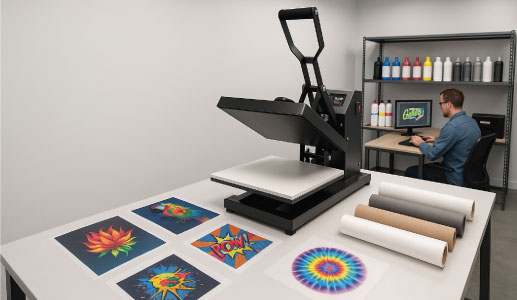The Rise of Direct-to-Film Printing in the Custom Apparel World
The printing industry is constantly evolving, and one of the most disruptive technologies to emerge in recent years is DTF printing—Direct-to-Film. Whether you’re a small business owner, a professional printer, or an apparel brand, you’ve likely heard the buzz about DTF. But it’s not just hype—this technology is transforming how we print on textiles.
In this blog, we’ll explore the DTF printing industry, how it started, where it’s going, and why it’s reshaping the future of garment printing.
What is DTF Printing?
Direct-to-Film (DTF) printing is a technique where designs are printed onto a special film using water-based pigment inks. After printing, a hot-melt adhesive powder is applied, the film is cured, and the design is heat-pressed onto a garment.
Unlike traditional printing methods, DTF offers:
- Full-color, high-detail prints
- The ability to print on a wide variety of fabrics
- No need for pre-treatment (as in DTG)
- Easy transfer and storage
Evolution of the DTF Industry
While DTF printing only gained mass popularity around 2019–2020, it quickly filled a gap in the industry:
- DTG (Direct to Garment) required pre-treated garments and worked best on cotton
- Screen printing involved high setup costs and long production times
- Sublimation worked only on polyester and light-colored fabrics
DTF revolutionized textile printing by offering a low-cost, versatile, and scalable option for both small and large operations.
Market Growth and Trends
📈 Rapid Expansion
The DTF printing market is one of the fastest-growing segments in textile printing. Experts forecast:
- Global DTF market CAGR of over 10% between 2023–2028
- Increasing adoption by Etsy sellers, POD platforms, and custom apparel brands
- Entry of large-format DTF printers to handle bulk production
🔥 Key Trends Driving Growth:
- Demand for Custom Apparel: Streetwear, events, sportswear, merch, and niche clothing lines
- E-commerce Boom: Drop shipping and print-on-demand businesses love DTF’s versatility
- DIY Craze: Affordable entry-level DTF printers allow hobbyists and crafters to get involved
- Hybrid Shops: Screen print shops adding DTF for short runs and full-color jobs
Benefits Fueling the DTF Printing Boom
| Feature | Impact |
| 🧵 Fabric Versatility | Print on cotton, polyester, blends, nylon, leather, etc. |
| 🎨 Rich Colors | High-definition, vibrant full-color designs |
| 💸 Low Setup Cost | Minimal prep—great for small businesses |
| 📦 Print Ahead | Create designs in batches and press on-demand |
| ⏱ Quick Turnaround | Faster production vs. DTG or screen printing |
| 💻 Easy Integration | Compatible with RIP software, easy learning curve |
Key Players in the DTF Ecosystem
- Printer Manufacturers: Epson (converted), Mimaki, Roland, and new DTF-specific brands
- RIP Software Providers: CADlink, AcroRip, DTF Pro
- Material Suppliers: PET film manufacturers, ink companies, hot melt powder producers
- Print Shops & Fulfillment Centers: Offering DTF transfers and ready-to-press sheets
- Online Marketplaces: Etsy, Amazon Handmade, Shopify stores
Challenges in the DTF Printing Industry
Despite its growth, DTF isn’t perfect. Some common issues include:
🔧 Technical Issues:
- Clogged printheads due to white ink sediment
- Humidity sensitivity affecting film storage and adhesion
- Powder residue problems if not cured correctly
💼 Business Hurdles:
- Oversaturation in beginner markets (due to low entry barrier)
- Quality inconsistency from cheap materials or low-end printers
- Environmental concerns around plastic film waste and adhesives
However, with the right setup, training, and quality supplies, most of these issues can be minimized or eliminated.
Emerging Innovations
Here’s what’s coming down the pipeline in DTF:
🚀 1. Automation & AI Integration
- Fully automated DTF systems for film feeding, powdering, and curing
- AI-controlled color correction and print alignment
🌱 2. Eco-Friendly Materials
- Biodegradable PET films
- Non-toxic hot melt powders
- Water-based inks with lower environmental impact
🎯 3. Industrial Scale Expansion
- DTF being integrated into mass production with large-format machines
- Brands using DTF to reduce warehousing with on-demand apparel systems
Opportunities for Entrepreneurs
Now is a great time to enter the DTF market. Here’s why:
- Low-cost startup options under $5K
- Huge demand for niche apparel (birthday shirts, school teams, holidays)
- Growing DTF transfer reselling market
- Customization is king: People want unique, small-batch prints
Whether you’re building your own brand or supplying other print shops, DTF gives you the tools to grow flexibly and quickly.
The DTF printing industry has evolved from a niche curiosity into a mainstream powerhouse in digital textile printing. Its unique balance of affordability, quality, and scalability makes it a compelling solution for creators of all sizes—from garage start-ups to commercial print shops.
As the technology continues to mature, businesses that adapt early and invest in quality equipment, materials, and training will lead the way in this ever-growing industry.

